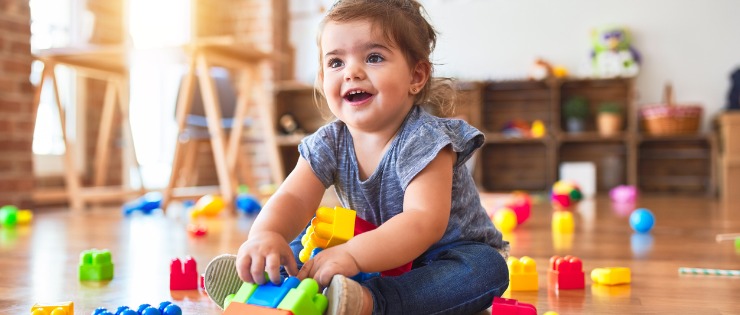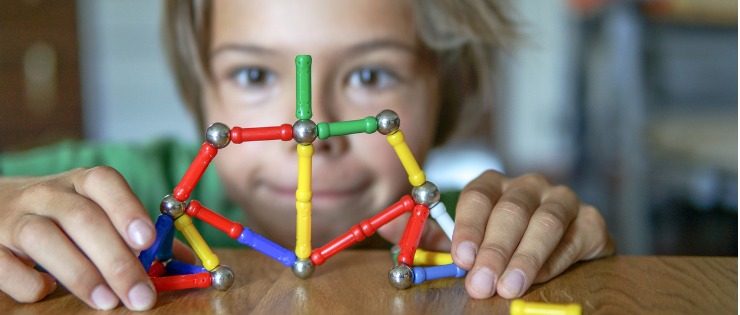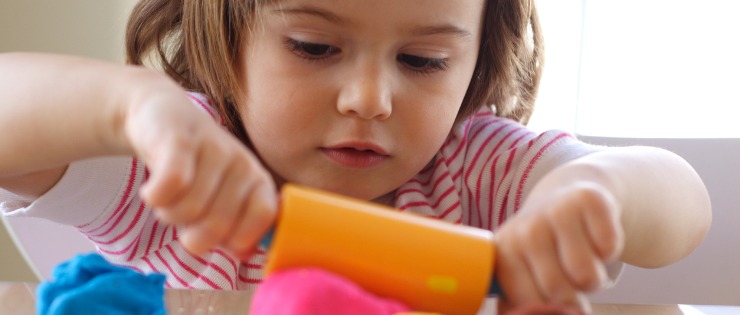
Christmas is just around the corner, so it's time to start thinking about what to include in your little one’s stocking. There are so many toys on the market, which means making your choices can become overwhelming. You don’t want to fill the house with toys that only hold their attention for five minutes or, even worse than that, toys that pose a risk to their safety.
Toy Safety
Australian children are protected by safety standards for toys that are intended or suitable for those under 36 months of age. The standard outlines the design and construction requirements, labelling and procedures for testing that manufacturers should undertake.
Some of the main hazards to young children include:
Choking Hazards
Children under the age of 36 months are at increased risk of choking than older children. They shouldn’t be given a toy that has small or removable parts as they can be swallowed and become lodged in the windpipe. The toy itself or any parts of it that can come off must not be smaller than 31mm in diameter and 57mm long.
Buying Tips & Safe Use:
Look for hard-wearing toys that are less likely to have small bits break off.
Throw out or repair any toys that have a broken part that could come loose.
Supervise children whenever there are toys around that could pose a choking risk.
Store all toys that have small parts out of reach.
Check the floor for any small parts that an older child might have left out.
Batteries
Many toys use button batteries to produce sound and light effects. On average, one Australian child every month swallows or inserts a button battery into their ear or nose. The batteries pose a severe risk to children under the age of five. Not only can swallowing the batteries cause a child to choke, the chemicals can cause severe burns to the oesophagus and internal organs.
Buying Tips & Safe Use:
Ensure all batteries are kept out of sight and out of reach of children.
Check that all battery compartments on toys and household objects are secured tightly.
Familiarise yourself with all items in the house that use button batteries and put away or dispose of them.
Magnets
Similar to button batteries, some toys and household items contain small magnets that a child can easily swallow. The small but powerful magnets are a choking hazard, but multiple magnets can lock together though the walls of the intestines and cause perforations and blockages that require urgent surgery.
Buying Tips & Safe Use:
Check to see if the toy contains magnets and that they are securely attached or embedded.
Make sure the magnet is too big to fit inside a young child’s mouth if it becomes loose.
Dispose of toys if the magnets are loose.
Always watch a young child when they are playing with toys that contain magnets.

Other Safety Checks
When you’re choosing toys for your children, check if it has any of the following:
Long string, ribbon or cord that could strangle a child.
Loud noises.
The potential to cause a trip hazard.
Sharp or rough edges.
The potential to pinch or trap fingers.
Washable material that is able to be cleaned.
For the parents’ well-being, it’s important to consider:

The mandatory standard Consumer Protection Notice No. 14 of 2003, as amended by Consumer Protection No. 1 of 2005 sets out the requirements for toys for children up to and including 36 months. The mandatory standard is based on certain sections of the voluntary Australian/New Zealand Standard AS/NZS ISO 8124.1:2002 'Safety of toys Part 1: Safety aspects related to mechanical and physical properties'.
Toys & Your Child’s Development
Toys don’t just give kids something to do, they’re an important part of a young child’s development. According to the Australian parenting website Raising Children, the best toys for kickstarting a child’s development are open-ended, meaning they can be used in several different ways. To play with the toys, a child must use their imagination, creativity and problem-solving skills. It’s play that has no limitations or instructions, no rules, and no right or wrong way to use the toys.
Closed-ended toys have one specific purpose and use. There is a clear purpose to the toy and often involves a challenge or requires a child to work through a problem. A child may need to concentrate and self-correct.
Examples of Open-Ended Toys Include:
Blocks (12 months+) - a child will need to stack or build with blocks.
Balls (6 months+) - a child will take action such as holding, throwing or rolling a ball.
Cardboard boxes (12 months+) - we all know kids will play with packaging more than the toy inside, so why not just give them a cardboard box to play with?
Dress-ups (2 years) - let their imagination transform themselves into a character with any kind of child or adult outfit or hand-me-down.
Tea set (2 years) - ideal for gross and fine motor skills, as well as imaginative play.
Tool set (3 years) - kids love helping around the house and tools let them make-believe and develop fine motor skills.
Play kitchen and shop (2-5 years) - good imagination and speech opportunities arise when your child is cooking or shopping.
Playdough (2 years+) - most children love getting their hands around playdough and it’s great for strengthening small hands and fingers.
Don’t feel like you need to buy educational toys that feature the alphabet or numbers. Your child won’t be behind when they start school if they haven’t had numerous toys to teach them the basics of numeracy and literacy. Children will learn and develop through imaginative play and interacting with others during the first few years of life.

Before Handing Over a New Toy
On Christmas morning, the pressure is on to get the toy out of the box and handed over to your child - but don’t be so quick. If you’re unfamiliar with the toy, test it and read the instructions. If there’s any assembly required, make sure you complete it fully and don’t forget to supervise your child with a new toy.
Chances are your child will receive so many toys from family at Christmas time that they can be overwhelmed with choice. Place some toys away and rotate them so they think they’re seeing new toys each week (and you aren’t picking up as many toys off the floor every day).
Items That Aren’t Toys
Young children are less likely to be influenced by marketing and want the latest toy fad like an older child. So, there’s less pester power in the early years. You don’t need to spend a fortune on buying enough toys to last until their birthday. Babies and toddlers can be entertained with safe household items that won’t cost you a cent and don’t require a toy room to store them. A young child can have just as much fun playing with plastic cups, a light torch, paper towel tubes, safe kitchen utensils, plastic containers, textured fabric, pegs and craft supplies.
If you’re unsure if an object is safe, make sure you supervise your child or better yet, get in there and play with your toddler. After all, spending time with you is what young children want the most.